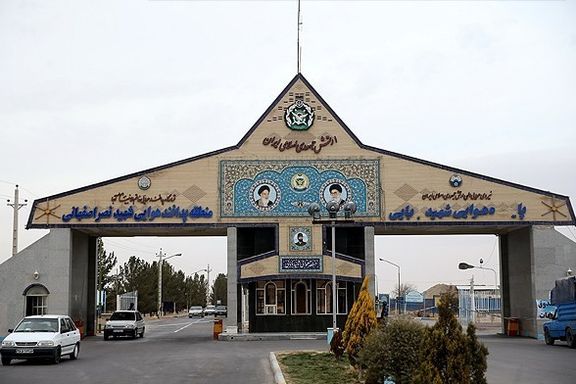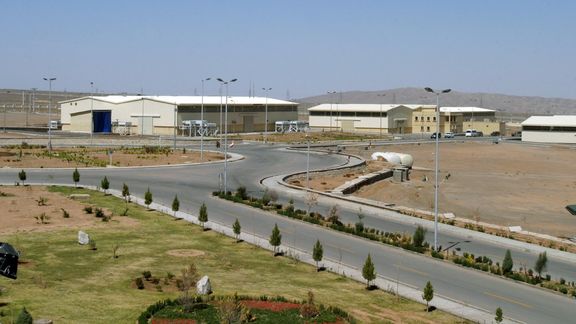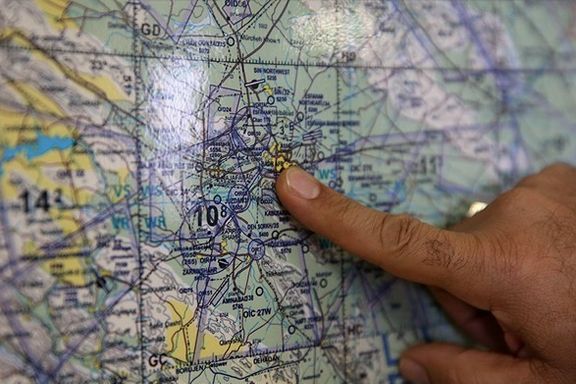What We Know About Israel’s Attack On Iran

Explosions were heard near the central-western city of Isfahan early Friday as Israel reportedly launched a widely anticipated strike in retaliation to an Iranian attack over the weekend.

Explosions were heard near the central-western city of Isfahan early Friday as Israel reportedly launched a widely anticipated strike in retaliation to an Iranian attack over the weekend.
State-run IRNA news reported the "activation of anti-aircrafts'' in Esfahan's 8th Shekhari Air Base Base while downplaying the situation as "normal." Meanwhile, flightradar24.com showed that for hours after the incident, Iranian air traffic was lower than usual.
Iranian officials have not officially confirmed the attack was carried out by the Israelis and merely said Esfahan's air defenses have targeted several “micro-birds and suspicious objects”.
US officials confirmed to ABC News that three missiles were fired from Israeli fighter aircraft outside of Iran. "The Israelis were targeting an air defense radar site near Esfahan that’s part of the protection of the Natanz nuclear facility," an official said. "The first assessment is that the strike took out the site, but assessment hasn’t been completed," the official said.
A report in the New York Times quoted two Israeli and three Iranian officials who said the Israeli army had launched an attack on Iranian targets. The NYT further reported that Iranian officials confirmed to them that a strike had hit a military air base near Esfahan.
Bloomberg wrote that Israelis had notified US officials before the attack.
The Italian foreign minister stated that the US informed the G7 foreign ministers that it had received "last-minute" information from Israel about an upcoming operation in Iran.
US Secretary of State Antony Blinken declined to comment on the overnight attack in Iran, stating that Washington does not participate in any offensive operations.
Around the same time as the incident in Iran, Syria's SANA news agency reported Israel had fired missiles at an air defense unit in the country’s south, which is directly west of Esfahan, some 1,500 kilometers away. Syria's Observatory for Human Rights reports that the strike targeted a military radar used by the government.

With Iranian state media confirming that the antimissile system was activated at Esfahan's 8th Shekari Air Base, and US media confirming its significance as a major air base, attention is inevitably focused on that specific location.
It is one of the 17 active air bases of the Islamic Republic Army, known as the "heart of the country's air defense" due to its location in one of its most central parts. Iran's fleet of F-14 Tomcat aircraft—purchased before the 1979 Islamic Revolution—is headquartered at this base.
Farzin Nadimi, a Senior Fellow with The Washington Institute, told Iran International besides two military bases, Esfahan is home to the Shahed Aviation Industries Research Center, which manufactures the Shahed-136 drones.

Esfahan is also home to sites associated with Iran's nuclear program, such as its underground Natanz enrichment site, which Israeli sabotage activities have purportedly repeatedly targeted.
After the incident, state television described all the area's nuclear sites as "fully safe."
The United Nations' nuclear watchdog, the International Atomic Energy Agency, also stated there had been no damage to Iran's nuclear facilities.
Although there are no official reports of what type of weapons were used during the attack, experts have speculated what might have occurred.
Nadimi, who specializes in security and defense affairs, told Iran International that Israel would not use regular or laser bombs to carry out the attacks as they have done in the past. Since 2015, the Israeli military has possessed missiles with a range of 1,500 kilometers that can be launched from aircraft, which means they can be fired without entering the Esfahan anti-aircraft airspace.
According to the Jerusalem Post, long-range missiles were used in the attack to avoid Tehran's radar detection capabilities, debunking Iran's claims that "micro drones" were used.
It’s worth mentioning that Reuters quoted a senior Iranian official who said the attack might be by "infiltrators" rather than by Israel.

Iran launched over 350 projectiles on Saturday night following the alleged April 1 Israeli air strike on the Iranian consulate in Damascus in which two senior IRGC commanders were killed along with several others.
Some experts believe the relatively small scale of Friday's attack may be attributed to pressure exerted by the US and its allies, as well as the fact that Israel is engaged on other fronts with Hamas and Hezbollah.
An unnamed Israeli official told the Washington Post that the attack "was intended to signal to Iran that Israel had the ability to strike inside the country".
Some analysts have taken a different stance, comparing the aftermath of the attacks rather than how they were carried out.
Menashe Amir, a Middle East affairs analyst, told Iran International that the attacks are comparable: Iran intended to target the Nevatim Airbase, and Israel also attacked a military base in return. The difference is that Iran had to make extensive use of artillery while Israel did not have to, which shows the superiority of Israel's military power.
According to Amir, the attack fits the doctrine the Israeli military has always pursued: not to engage in war on several fronts.
Political analyst Hessam Dastpish told Iran International that both Iran and Israel achieved their respective objectives through the use of their respective methods of conflict. Iran created a massive scene to satisfy proxy groups, while Israel wanted the support of the US and allies, so under their pressure, it pursued a different strategy.